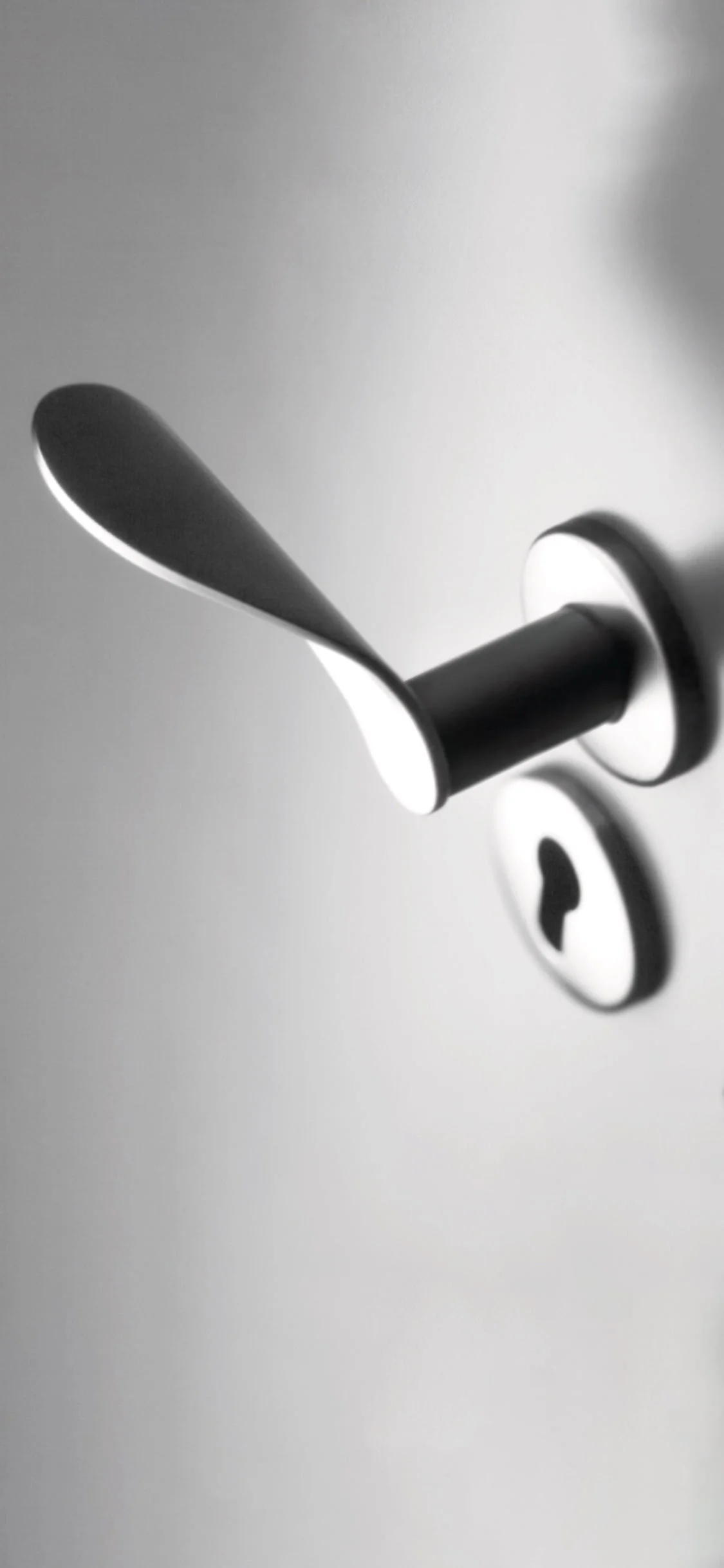
FSB Handles
Franz Schneider Brakel is a German company specialized in high-end lever handles for doors and windows etc. CEO Jürgen W. Braun had invited top designers from all over the world to visit the company hoping some of them would be interested in a cooperation. He later added Erik Magnussen to the list which also included Philippe Starck, and the two designers worked parallel on series that were launched at the same time.
Jürgen W. Braun wrote:
“In early 1994, the Name Design series went Scandinavian and Erik Magnussen entered the Brakel scene. Born in 1940, the dane achieved fame when he followed in the footsteps of Arne Jacobsen at Stelton. Magnussen’s jugs, butter dishes, side-forks, lanterns and cutlery ranges in stainless steel became a danish trademark, his crisp formal vocabulary the symbol of what is often referred to as frosty Nordic design. His policy is to work on designs until their functioning can be taken as read.
Our collaboration with Erik Magnussen began late in the summer of 1994 when Erik and his four-legged friend Kaktus stopped over at Brakel for the first time. Kaktus, a splendid wire-haired terrier, was part of the design team from the start. Erik inspected out production, discussed the concept of the product family with us, and promised to mull over our scheme in sunny France and to turn up again at some point once the long Danish winter was over.
We got together half a dozen times, either at ours or in greater Copenhagen, over the next twelve months. Naturally enough, our remit was largely about taking Kaktus for long walks through the Weser valley woodlands and around the Royal Hunting Lodge, though we did also touch on the subject of design. After such a long and intensive period of incubation, it is hardly surprising that Erik Magnussen won the hearts of Brakel’s door handle makers with his very first sketches. He set his initial ideas to paper with broad pencil strokes. We thought we could discern the wing-beat of Scandinavian gulls in these first drafts. Which is how the entire product family acquired its semiotic identity. The materials we were required to use by Erik Magnussen were stainless steel and black plastic, his favorites. He also had clear ideas concerning the production process. We were not to engage in any bending, welding or widening, we were simply to fold. Once again, we were being led into virgin engineering territory by a designer.”

